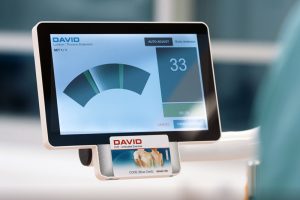DAVID Devices: A Solid Foundation
DAVID devices, renowned for their innovative approaches to rehabilitation, have already carved a niche in the physical therapy landscape. Incorporating advanced biomechanical principles, these devices empower therapists to offer tailored and targeted exercises to patients. What sets these devices apart is their ability to allow isolated training, which is crucial for effective rehabilitation without causing secondary injuries.
Artificial Intelligence (AI): The Future of Personalization
While DAVID devices address the physical component of rehabilitation, AI promises to revolutionize personalization and data-driven decision-making. By collecting data such as movement patterns, muscle tension, and rehabilitation progress, AI can develop algorithms that accurately predict individual needs and progress. These automated insights enable physical therapists to dynamically adjust treatments, maximizing the efficiency and effectiveness of each session.

The Synergy: DAVID Devices Meet AI
Merging DAVID devices with AI creates a symbiotic relationship that pushes the boundaries of physical therapy. Imagine a scenario where a patient completes a session using a DAVID device while AI technology analyzes data in real-time. This analysis can provide immediate feedback to both the patient and therapist, suggesting adjustments based on the collected information.
For instance, if a patient with a back injury is training with a DAVID device, AI can offer real-time feedback on posture, range of motion, and muscle activation. When necessary, the system can suggest modifications to the physical therapist, such as adjusting exercise intensity or altering movement parameters. This level of real-time adaptation and personalization has the potential to enhance the effectiveness of each rehabilitation session significantly.
Future Prospects and Challenges
While integrating DAVID devices and AI holds promise, it also presents challenges and ethical considerations. Privacy of patient data, the accuracy of AI algorithms, and the need for ongoing training and validation of these systems are just a few of the many considerations.
Nevertheless, with continued advancements in technology and a growing demand for personalized healthcare solutions, the horizon looks promising. The future of physical therapy with DAVID devices and AI at the forefront promises an environment where rehabilitation is faster, more effective, and more tailored than ever before.

Conclusion
As we look ahead to the future of physical therapy, DAVID devices and AI remain at the forefront of innovation. The fusion of advanced rehabilitation technologies with data-driven intelligence offers a promising pathway to enhanced patient outcomes and a revolutionary approach to health management. While challenges and hurdles will undoubtedly arise, one thing is clear: the future of physical therapy looks promising, with DAVID devices and AI leading the way.
 عربى
عربى 






















